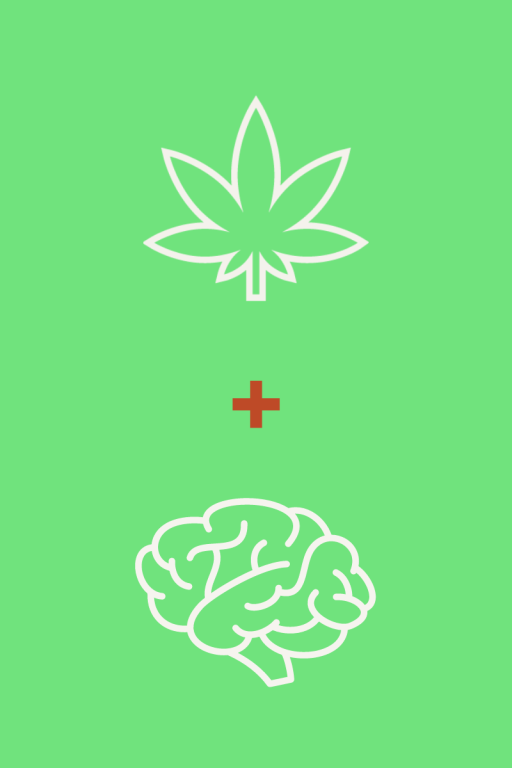How cannabis affects the developing brain
If you’re a teenager or young adult and thinking about using cannabis, there are some things you need to know.
While it’s legal to buy cannabis once you turn 18, your brain isn’t really fully developed until around the age of 25. Specifically, the front of your brain—the area that controls your judgment and personal awareness—is the last part of your brain to fully mature. As a result, cannabis use before the age of 25 can have an impact on how your brain develops. That’s why cannabis use is not recommended until after age 25. Remember, the younger you begin using cannabis and the more often you use, the higher your risk.

What does cannabis do to your brain?
When you use cannabis, THC enters your body either through your lungs (if you inhale it) or digestive tract (if you swallow it) and then it goes into your bloodstream. From there, the THC is carried to your brain, where it interacts with areas of your brain that affect pleasure, coordination, memory, concentration and perception of time.
So how exactly does it work? Basically, in your brain signals are passing between cells known as neurons. A change in these signals can influence your brain activity— and using cannabis is just one of the ways to interrupt those signals.
Your body contains an endocannabinoid system which contains CB1 and CB2 receptors. These receptors respond to cannabis like other substances already found in your body. THC results in your brain being over-stimulated, interrupting normal function. Regularly using cannabis with high levels of THC (more than 10 mg or 10%) can increase your risk for mental health problems like suicidal thoughts and psychosis (seeing, hearing and believing things that aren’t real). Reducing the amount of cannabis you use, or stopping altogether, can lower your risk.
On a developing brain, cannabis use can have a significant – and lasting – effect. Things like attention span and memory can be affected for a long period of time. Research shows it can impact finishing school. You only get one brain, and one chance to develop it – so cannabis consumption under 25 is not without risk.
Is there a safe amount of cannabis to consume when you're under 25?
Cannabis is a drug, and all drug use carries some amount of risk. The only way to completely avoid health risks related to cannabis is not to use it. Research shows(external link) the younger you start using cannabis and the more frequently you use it, the more at risk you are of negatively impacting your brain development. Using cannabis before age 25 can impact things like your ability to concentrate and in some rare cases can cause long term health effects. The safest choice is to avoid use altogether until you are at least 25. However, if you do choose to use cannabis products before turning 25, there are a few ways to lower your risks.
The Lower-Risk Cannabis Use Guidelines(external link) outline ways to reduce the risks of cannabis use, these include:
- Choosing low-THC products to avoid the risk of physical and mental health issues or behavioural problems.
- Using cannabis less frequently with low-risk use outlined as one to two days per week.
- When smoking or vaping, avoiding inhaling deeply or holding your breath.
- Avoiding inhaling cannabis (smoking and/or vaping) and considering different methods of using cannabis products like ingesting edibles.
- Not driving or operating other machinery while you are affected by cannabis.
- Not using cannabis if you are pregnant or have a family history of mental health issues or substance use.
Don't all young people use cannabis?
It might feel like everyone is using cannabis but, Statistics Canada reports high percentages of non-users in every age group.
- 80% of 15 to 17-year-olds
- About 65% of 18 to 24-year-olds
- About 70% of 25 to 44-year-olds
- About 90% for ages 45 and older
So while cannabis is most often used by 18 to 24-year-olds, most Canadians choose not to use. It’s important to also consider that with more people reporting that they have tried cannabis, it doesn't mean regular use is common. While it may seem like everyone you know is using cannabis or has tried using it, not everyone is using cannabis all the time.